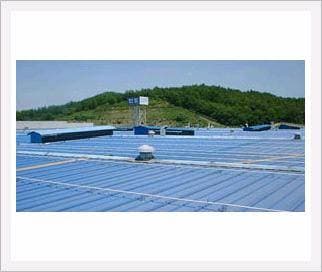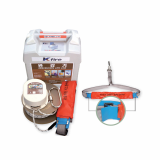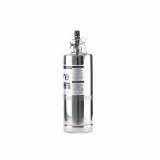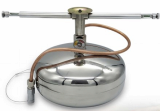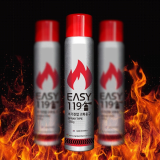Sprinkool System
Negotiable Min Order Quantity Unit
- Required Quantity
-
- Place of Origin
- Payment Terms
- Negotiable
- Production method
- Negotiable
- Shipping / Lead Time
- Negotiable / Negotiable
- Keyword
- Category
- Fire Extinguisher
Apply a video call to the Supplier

Worldbestech Co., Ltd.
- Country / Year Established
-
 South Korea
/
South Korea
/
- Business type
- Others
- Verified Certificate
-
16


| Product name | Sprinkool System | Certification | - |
|---|---|---|---|
| Category | Fire Extinguisher | Ingredients | - |
| Keyword | - | Unit Size | - |
| Brand name | - | Unit Weigh | - |
| origin | Stock | - | |
| Supply type | - | HS code | - |
Product Information

Physical Principles of the System
Sprinkool Roof Spray Cooling is based on the physical property that water absorbs a large amount of energy, in the form of heat, when it changes phases. Misting water on a hot surface, such as a roof, will result in a change of phase (evaporation), and the heat of vaporization absorbs the heat that would normally penetrate into the roof surface during the day. The evaporative process continues as long as the roof surface temperature exceeds the wet bulb temperature of the "ambient air". The Sprinkool system exploits this phenomenon by spraying, or more accurately, misting the roof with fine droplets of water over the course of the day. This brings the surface temperature of the roof very close to the wet bulb temperature of the surrounding ambient air, and consequently reduces the heat gain through the roof to a point approaching zero. The control unit of the system constantly monitors the temperature of the roof surface and correspondingly modifies the amount of water emitted to that which can be evaporated at that point in time so as to maintain the surface temperature at its lowest possible point. [The quantity of water used is thereby minimized by the relationship between roof temperature and the properties of evaporation. This results in minimal to no water waste due to runoff.] The surface temperature resulting from the solar load will vary depending on several factors (latitude, month, and, to a certain extent, color and surface smoothness); however, the temperature of the roof which will normally range from 140°- 160°F, (sometimes greater) can be reduced 60° to 70° F. A cooler roof exterior translates into (1) cooler, more comfortable interior conditions for occupants in non air-conditioned buildings, (2) reduced power costs in buildings that are currently air-conditioned, (3) increased cooling capacity in buildings where air-conditioning equipment is marginal, and (4) smaller mechanical air-conditioning requirements for new building construction.
Roof Cooling System Objectives
- SYSTEM OBJECTIVE
- To maintain the roof surface temperature throughout the day as close as possible to the wet bulb temperature , thereby minimizing or negating the solar heat flow through the roof.
- SYSTEM REQUIREMENTS
- To accomplish this objective, there are several system requirements:
- To mist the roof evenly and completely.
- To limit the amount of water used to that which will evaporate at that specific point in time. This rate of evaporation is not a constant, but is dependent on several factors, each of which must be taken into consideration for determining optimal water usage.
- To limit maintenance of the system to spring start-up and winter drainage.
- SPRAYING OBJECTIVE
- To provide a mist that will cover the roof's surface evenly and completely.
- To provide a long lived, consistent metering of water with minimal maintenance requirements. In addition, the spray method employed should afford a high degree of adjustability since:
- No two roofs are the same and all will evaporate or hold varying amounts of water.
- Each roof at a particular slope can hold a certain size droplet. Spraying larger than optimal sized droplets causes water to run and results in excessive water usage, evidenced by ponding or runoff.
- On a typical roof, there exist numerous conditions (low spots, various colors, different roofing materials) that require different spray rates. The layout of the roof (including position of skylights, A/C units, intake ducts, etc.) requires spraying patterns to be adjustable to insure that the spray is directed only onto the roofing surface.
Method of Spraying
Sprinkool Sprayhead The Sprinkool system
employs a sprayhead designed and developed specifically for roof cooling systems. The sprayhead is screwed into a tee incorporated into the lateral feeder lines. The sprayheads are spaced in conjunction with the adjacent feeder lines in a manner that allows the sprayhead pattern to achieve proper coverage. Individual sprayheads can be altered to increase or decrease water flow and the direction or pattern of the spray.
Analysis of Sprinkool Sprayhead System:
- The individual Sprinkool sprayhead can be easily adjusted to accommodate a large number of roof types, slopes, and obstructions or problems. [Orifice size can be altered from .030" to .060"] [Directional caps can be snapped on to provide pattern ranging from 45'-360']
- Sprinkool sprayheads are constructed of heavy walled ABS. [Not susceptible to UV or weathering] [Fracture resistant to over 700 lbs.] [Provides consistent flow over an extended period of time]
- Each sprayhead has a built-in filter with an area that covers over 50 times the largest orifice area, which prevents clogging by particles as small as 30 mil.
- Each sprayhead orifice is made of Celcon and has exceptional lubricity characteristics, which prevents clogging or particle attachment that would affect spray flow and pattern. [Clogging and subsequent free replacement by the company has occurred in less than 1/2% in excess of 100,000 orifices over the last 10 years.]
- entire sprayhead, the orifice, or the directional cap can be removed by hand, without shutting the system down
- Each sprayhead is guaranteed against clogging and normal wear for life. Maintenance to ease or eliminate accumulated particles or clogging is not required.
- Each sprayhead orifice is mounted nominally 3" above the feeder line.[Prevents water leakage (weeping) between cycles to avoid puddling] [Affords total drainage blowdown to avoid freezing][Affords greater control and less water consumption since feeder line is full before and after every cycle]
- Each sprayhead covers a minimum of 100 sq. ft. with a fine even mist. The Sprinkool system hydraulic network is constructed from either copper (Type M Hard) or Sprinkool's UVR (Ultra Violet Resistant) PVC tubing, made to Sprinkool specifications specifically for Sprinkool Systems, Inc., Killen, AL.
CONTROLS OBJECTIVE
To constantly monitor multiple incoming variables (temperature, humidity, wind direction and velocity, etc..) and their individual effects on the rate of evaporation occurring on the roof's surface. Using these variables, the controls will automatically adjust the frequency and time duration of the system (spray cycle timing) in order to maximize and maintain the lowest temperature on the roof using the least amount of water. Other requirements include a control system of modular design that:
- is compatible with systems within the plant;
- can be serviced by a non-technical person; and 3. is easily programmed.
Controls Method
- Sprinkool's Rate of Evaporation (ROETM) Controller
- Sprinkool Systems ROETM "Intelligent Controller" is typically specified for larger systems up to 1,000,000 square feet, and is comprised of a 4K PLC based system, with math capabilities, analog modules, and multiple outputs. This allows the system to integrate the information from the roof surface and automatically adjust the frequency and misting times of multiple fields.
- Analysis of Sprinkool Sprayhead System:
- The controller is termed "intelligent" because of its ability to automatically adjust spray time based on changing roof surface conditions. The controller:
- Scans the sensors on the roof and records them.
- Recalls the previous sensor records and the amount of water sprayed (if any).
- Compares the present with the previous sensor records and notes the difference (if any).
- Projects the change in roof temperature given a marginal increase, decrease, or no change in spray time.
- Adjusts the spraytime (if required) to maintain or lower roof surface temperature.
- Implements optimal spray time.
- Scans sensors and repeats control sequence.
- Modular design, self diagnostics, and total "off the shelf" design insures easy servicing by non-technicians if/when necessary.
- All program tapes are kept on file. Replacement components are in stock and are shipped next day air if/when required.
- IBM compatibility and modem linkage is available.
- Lithium battery provides 2-4 year program retention without power (EPROM and EEPROM are also available).
- RTDs and transmitters allow roof conditions to be monitored simultaneously from any number of points at distances up to 4,000 feet, allowing backup sensors to be employed and actual control box placement anywhere in most facilities.
- Controls enclosure is NEMA 12 and weathertight
- Sprinkool's SOLARMATICTM Controller
- The SOLARMATICTM was designed to Sprinkool Systems' specifications as a solid state controller, incorporating temperature and solar sensors in managing the frequency and misting time of the system.
The SOLARMATICTM allows up to 2 roof sensors, 2 solar sensors, 1 interior and ambient sensor (for fan controls), 12 outputs ( up to approximately 60,000 square feet) along with an output for activating a pump and a master valve.
The SOLARMATICTM 12 outputs are interchangeable and independent from each other, allowing for unique settings of each output's frequency and misting time, along with a percentage modifier allowing for easy adjustments.
The units are in a NEMA 12 enclosure with a lockable clear cover and external hinge.
Units can be "daisy chained",or multiple controllers may be used for larger systems. - Sprinkool's KOOLMISTTM Controller
- The KOOLMISTwas also designed to Sprinkool Systems, specifications for smaller applications (up to approximately 20,000 square feet), but allows for only one solar and temperature sensor input. The controller has 4 outputs (not independently adjustable) and is enclosed in a NEMA 12 lockable clear cover with an external hinge.
- DESIGN OBJECTIVE
- System should require little or no maintenance and should not obstruct normal roof traffic.
Drainage should be easy and activated through the controls to avoid winter freeze up.
Method Of Design
No Sprinkool system, or any component, is sold or installed without a completed in-house design. All Sprinkool systems are designed by a registered P.E.
- Sprinkool's "tee design" assures no drain down between cycles. [The feeder pipes remain full of water between cycles which reduces uneven distribution and puddling on the roof.]
- Large aisles between feeder lines assure easy access to roof top equipment. In addition, system and aisles are designed with the servicing of such equipment in mind.
- The solenoid valves can be operated manually or automatically in order that individual fields can be deactivated on the roof.
- Sprinkool systems are designed with both pneumatic and gravity draining system which permits complete drainage and system startup on schedule.
- All Sprinkool systems are designed in house by a registered P.E. This insures that all systems are hydraulically sound, and the design is consistent from location to location. (Sprinkool Systems will not sell any components without an accompanying design.)
INSTALLATION OBJECTIVE
The system should be installed by experienced personnel. The quality of the installation should be of the highest caliber and consistent throughout the country. The customer is assured of single source responsibility for the proper operation of the system.
Method of Installation Installation-Sprinkool System
- Sprinkool Systems provides turnkey systems, installed only by trained factory personnel.
- Company employees do not merely install a piping network and control system, but also make sure that the system functions as intended. They are accountable directly to Sprinkool and to the customer.
- Sprinkool Systems provides design and components for installation by knowledgeable customer maintenance personnel or mechanical contractors
B2B Trade
| Price (FOB) | Negotiable | transportation | - |
|---|---|---|---|
| MOQ | Negotiable | Leadtime | Negotiable |
| Payment Options | Negotiable | Shipping time | Negotiable |

- President
- Kim Keun Ki
- Address
- #304, Woolim E.BI, 184-1, Guro 3-dong, Guro-gu, Seoul, Korea
- Product Category
- Fire Extinguisher,Other Rubber Products
- No. of Total Employees
- 1-50
- Company introduction
-
Welcome !
Welcome to our e-catalog home.
Here you can find information about our products. You can also send us inquiries and post comments about our company and products. We hope you enjoy your visit.
- Main Product


































